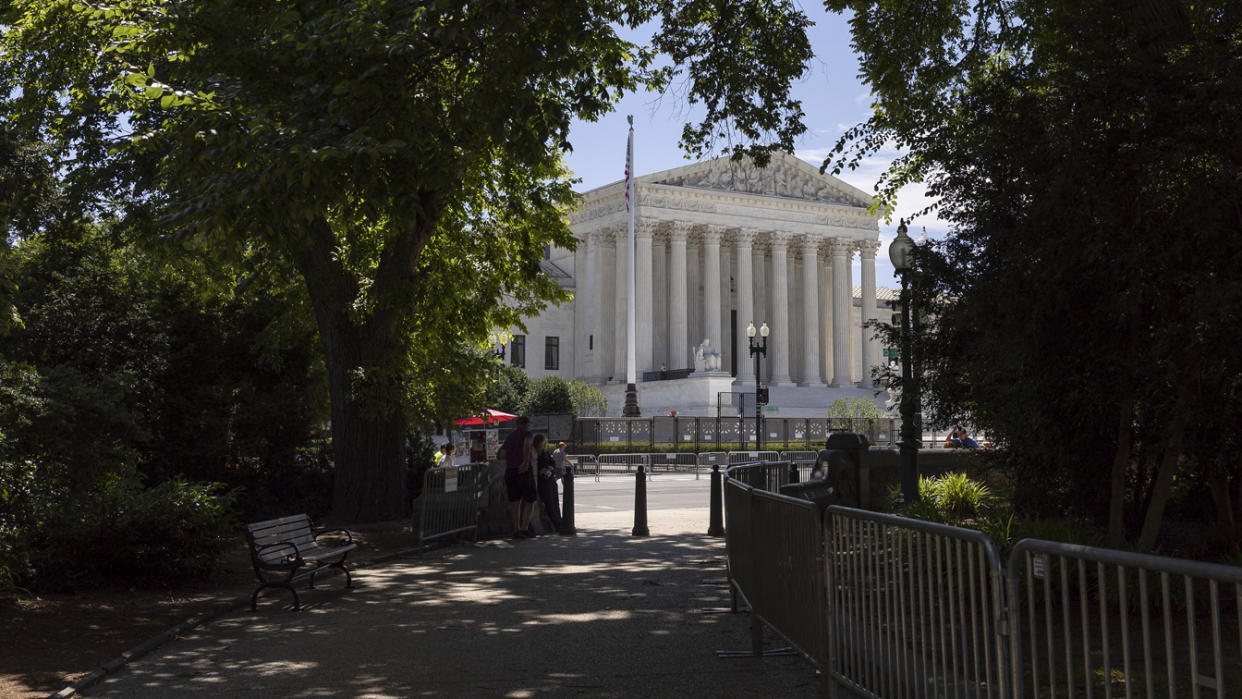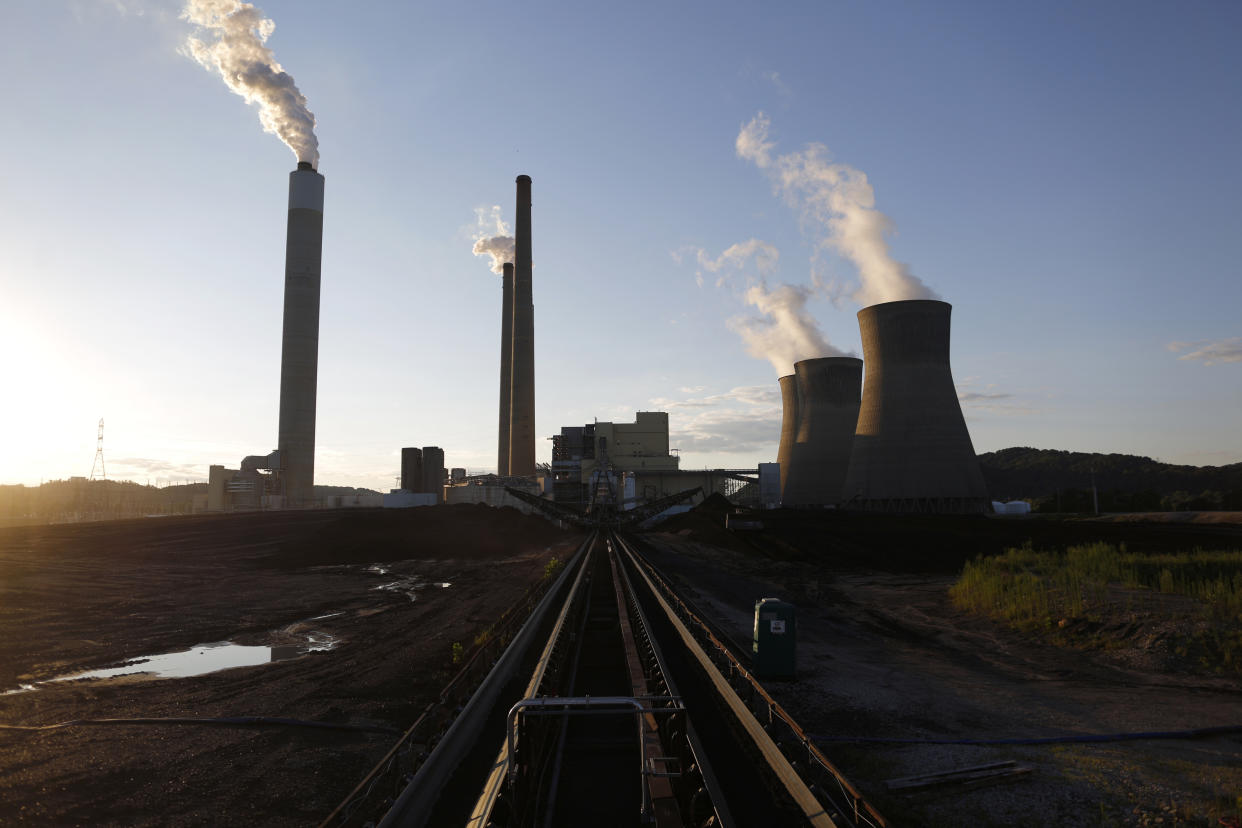Supreme Court invalidates 'important tool' to regulate climate pollution
The Supreme Court limited the Environmental Protection Agency’s ability to regulate carbon dioxide emissions from power plants in a 6-3 ruling handed down Tuesday that will have far-reaching implications on the federal government’s ability to fight climate change.
The court’s conservative majority held in West Virginia v. EPA that the Trump-era EPA did not violate the Clean Air Act by significantly softening planned limits on carbon emissions from power plants, signaling to future administrations that the pollution causing climate change can go effectively unregulated, and leaving the job of passing binding emissions restrictions to Congress.
The court further agreed with a collection of Republican-led states and coal industry groups that the EPA, because its head is a political appointee, cannot accelerate the power sector’s transition from fossil fuels to clean energy because that goes beyond the powers granted to the EPA under the Clean Air Act.

“Capping carbon dioxide emissions at a level that will force a nationwide transition away from the use of coal to generate electricity may be a sensible ‘solution to the crisis of the day,’” Chief Justice John Roberts wrote, quoting from a previous court ruling. “But it is not plausible that Congress gave EPA the authority to adopt on its own such a regulatory scheme.”
President Joe Biden voiced his bitter opposition to the ruling in a statement Thursday.
"The Supreme Court’s ruling in West Virginia vs. EPA is another devastating decision that aims to take our country backwards," he said in the statement. "While this decision risks damaging our nation’s ability to keep our air clean and combat climate change, I will not relent in using my lawful authorities to protect public health and tackle the climate crisis."
When the EPA unveiled the Clean Power Plan, in 2015, it did not merely require new pollution control technology, as has typically been the approach taken to limiting conventional pollutants. Instead, the rule set limits for the emissions of a state’s entire electricity portfolio that could be met through other approaches, including switching from coal to solar and wind power or reducing demand for electricity at peak hours through pricing shifts. Experts refer to these kinds of measures as “outside the fence line” of the source of pollution, in this case a power plant.
In 2017, under then-President Donald Trump, the EPA revoked the rule, arguing that the agency lacked the power to use the “outside the fence line” approach. Petitioners such as the American Lung Association sued to get the rule reinstated, arguing that the Clean Power Plan was legally valid and the Trump-era replacement known as the Affordable Clean Energy (ACE) rule, which did not require anything except modest gains in efficiency from coal-fired plants, was too weak to meet the EPA’s legal obligation to regulate carbon dioxide. (In 2007, the Supreme Court ruled 5-4 in Massachusetts v. EPA that the EPA is required to regulate carbon dioxide because it causes climate change, and the Clean Air Act mandates that the agency regulate “any air pollutant” that can “reasonably be anticipated to endanger public health or welfare.”)

Last year, the U.S. Court of Appeals for the District of Columbia Circuit sided with the public health groups and overturned the Trump-era rule, finding that “the ACE Rule and its embedded repeal of the Clean Power Plan rested critically on a mistaken reading of the Clean Air Act.”
The court sided with West Virginia et al., which had challenged that lower court ruling against the ACE rule. The majority, including three justices appointed by Trump, held that the Trump-era rule was valid and met the agency’s legal obligation. This decision will allow future administrations opposed to action against climate change to avoid implementing meaningful regulation of carbon emissions.
The three justices appointed by Democratic presidents dissented, in an opinion written by Justice Elena Kagan. They agreed with the lower court that the Trump-era EPA misinterpreted the Clean Air Act and violated the law when they scrapped the Clean Power Plan and replaced it with the ACE rule.
“Today, the Court strips the Environmental Protection Agency (EPA) of the power Congress gave it to respond to ‘the most pressing environmental challenge of our time,” Kagan wrote, referring to another precedent.
The bottom line for the Biden administration is that a new rule governing power plant emissions, which the EPA will soon propose, cannot require emissions reductions that are achievable only by moving away from coal. EPA Administrator Michael Regan has previously said the agency is waiting for this ruling to write its forthcoming regulation, so that it knows what is permissible. Now, as a result of the ruling, the next Clean Power rule can only require emissions limits that are achieved through pollution control technology.

After the February oral arguments in West Virginia v. EPA, environmental law experts predicted that a ruling such as this would limit the ability of federal regulations to combat climate change.
“It’s a significant constraint on EPA’s ability to regulate the greenhouse gas emissions of existing power plants,” Richard Revesz, a professor at New York University School of Law, told Yahoo News in April “You’re taking an important tool out of the EPA’s toolkit. It might ultimately affect the stringency of the rule, and if it doesn’t affect the stringency of the rule, it might end up being more costly.”
This decision follows a string of rulings limiting environmental regulations. In April, the Supreme Court upheld a Trump-era rule limiting state and tribal authority to veto projects such as pipelines that could pollute their waters.

